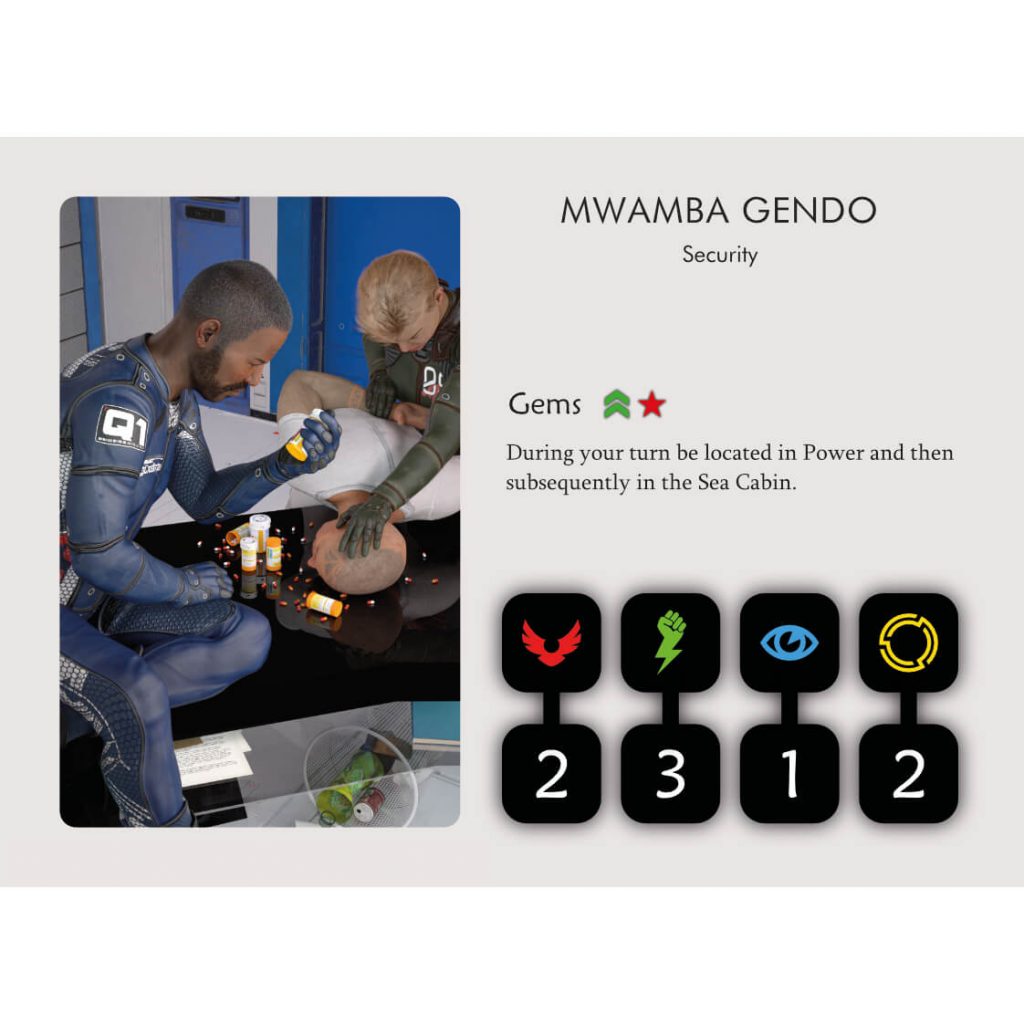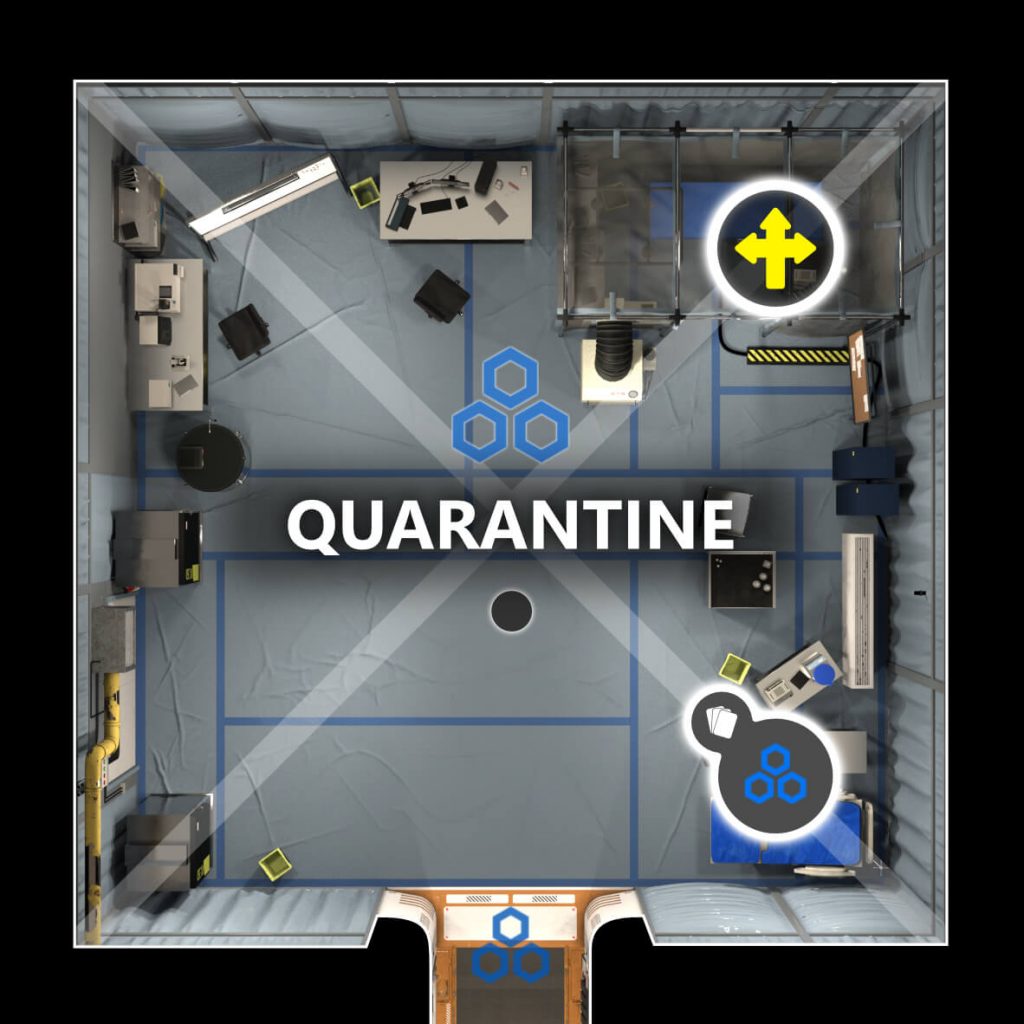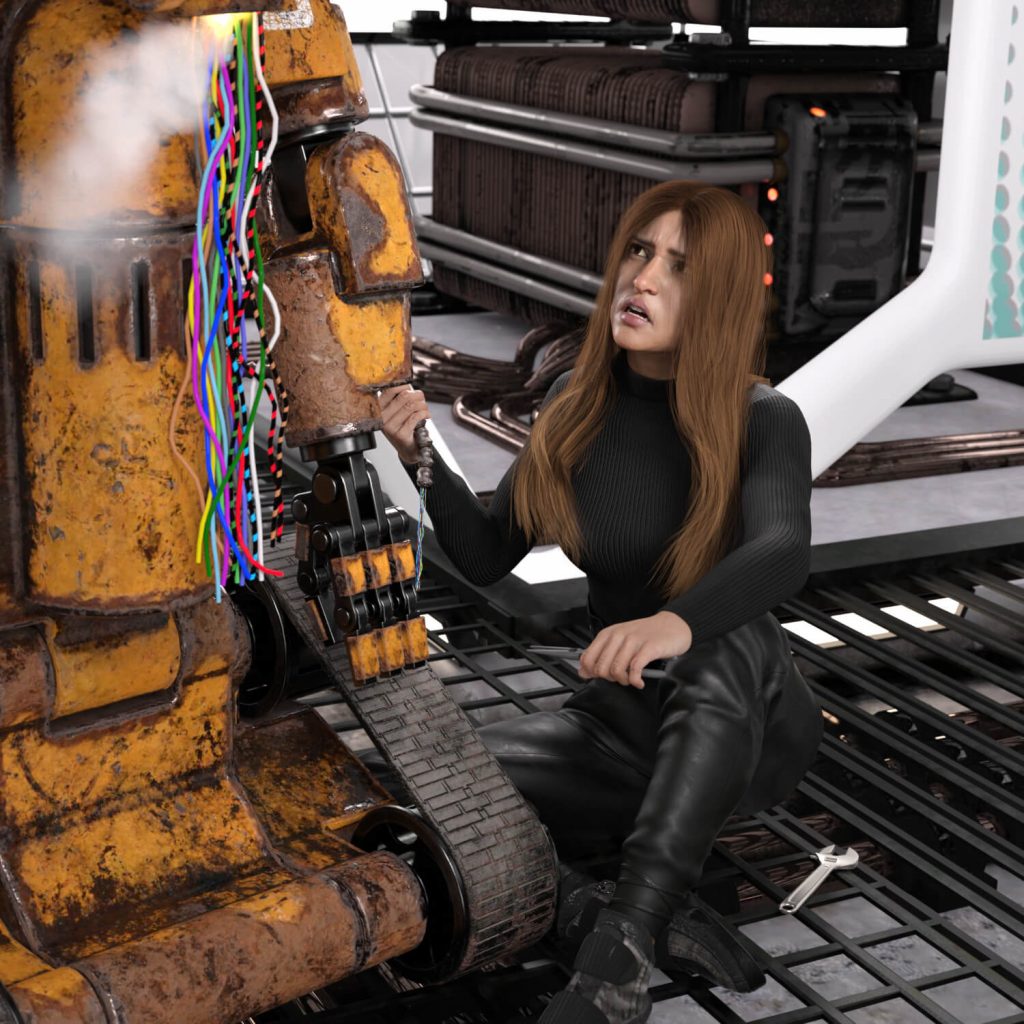- +44 (0)7312 869921
- sargassogames@gmail.com
- Mon - Fri: 9:00 - 18:30
You begin the game with one survivor. Survivor Cards feature the name, role, attributes and personal mission of the individual concerned. All your Survivors are grouped together into a single squad.
With this Squad you will explore the Riga, resolving Scenes and encountering Aliens.
Survivors
Each survivor has 4 Attributes: Leadership, Vigor, Wits and Logic. The higher the value, the better.
Some cards will instruct you to test an Attribute, To do this take a number of dice equal to the Attribute and roll them. If you roll any dice that are 5 or higher the test is passed. Otherwise you fail. As can be seen, the higher an Attribute the better it is.
Injury and Stress tokens are used to record the physical and mental harm inflicted on your Survivors. Each of your survivors can tolerate up to 2 each of these tokens. If a third of either type would be added the survivor is eliminated. We leave their exact fate to your imagination.
Players always have at least one Protagonist. Protagonists are the focus of your narrative. You must complete the personal mission of your Protagonist in order to be able to win the game. Protagonists can be changed, either when you gain a new survivor or if your current protagonist is eliminated. Lose your Protagonist at a vital moment and your mission, which perhaps you had almost completed, can be suddenly snatched away.

Tiles
The game is played on a map of tiles which is built up during play. To begin with there is only one tile and this is located at the centre of the map. This is the Docking Bay.
Players send their Squads through unexplored doorways to explore new areas of the map. When this happens an eligible tile is selected from the layout and added to play. If the tile is a compartment a scene is immediately resolved to represent the exploration. The other players contribute cards from their hands to compose the scene.
Compartments are the rooms of the ship. Passages are the corridors. As play develops these will join together to make a top down map of the Riga. When Aliens begin to spawn in numbers you will see that you have designed your own battleground. Then you will have to fight to control it.
Tiles feature various icons that are referenced during play. Some are covered with tokens when added and these tokens can be collected. Others feature station systems that can be interacted with, You can summon pop-up turrets, ride the transit system and more.

Actions
Players each have an Action Wheel. This is used to record the actions you perform. You may perform up to 12 actions per turn.
Actions are the things your survivors do, such as moving, using weapons, carrying out repairs and collecting items. You can perform up to 12 actions, but the more Move actions you take the more sound you generate. This reflects the speed at which you are moving. Running survivors are noisy survivors! Other actions can generate sound too, most notably using weapons.
The more sound the players make, the more aliens are likely to spawn at the end of the turn. You must therefore strike a balance between risk and reward. How much do you want to achieve on your turn? How much sound are you prepared to make?
Sound is added together and compared to a card at the end of the turn. Sometimes you will get away with making a lot of sound, but not always. Too much risks awakening monstrous aliens, and these are both dangerous and hard to eliminate.

Scenes
Scenes are narrative interludes. They are triggered when a survivor explores an unexplored compartment. When a scene is triggered, the other players inspect their hands and may (or must!) play an eligible card. The cards are then revealed and resolved one at a time by the affected player.
A scene is a modular story. Sometimes you will have decisions to make. At other times you will have to spend clues or parts to take full advantage of the scene, or indeed to stay alive. Scenes are highly diverse. You may find equipment, boost attributes, chance upon shortcuts through the station and much more.
You will occasionally be presented with an opportunity to rescue a survivor. Succeed and you gain the survivor,. Fail and your squad may be traumatized by the result. Not all survivors even want to be rescued. Some are in deadly peril.
Scenes prevent Zeno from being a game purely about moving, collecting items and eliminating Aliens. They give the game a heart.


